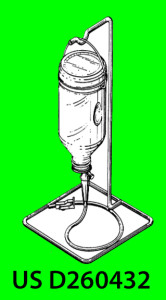If your design would be considered obvious by others in your design field, the USPTO will reject your design patent application. It doesn’t necessarily take great originality or craftsmanship to create a nonobvious design; sometimes, it requires only the ability to visualize things a little differently. Some indicators that your design is more likely to pass the “nonobvious” test are if:
- it has enjoyed commercial success
- it has a visual appearance that’s unexpected
- others have copied the design
- the design has been praised by others in the field
- others have tried but failed to achieve the same result, or
- you created a design that others said could not be done.
Some common ways that designers have demonstrated nonobviousness are by: using a familiar form in an unfamiliar medium (a floral pattern as a candle holder); making a slight change to an existing design that produces a striking visual effect (alternating the position of hearts on a wedding ring); omitting a visual element commonly associated with similar designs (a waterbed design that has no visible seams); or juxtaposing elements in a way that creates an unexpected visual statement (embedding a poker chip in the bottom of a shot glass).
Novelty and Nonobviousness: What’s the Diff?
The difference between novelty and nonobviousness is this: a design is novel if no one has previously made a similar design, while a design is nonobvious if no one has even considered making the design. In practical terms, though, the two standards often overlap and lack of prior art becomes the measure of both nonobviousness and novelty. It is possible for your design to pass the novelty test but to flunk the nonobvious test. For example, a court determined that a design (left) for an alcohol server that was shaped like an intravenous dispenser was new—no such design had been used for serving alcohol—but it was obvious and therefore not patentable. (Neo-Art, Inc. v. Hawkeye Distilled Products).
Is Nonobviousness Nonsense?
If you find the nonobvious standard for designs confusing, you’re not alone. There aren’t too many clear standards for determining when a design is obvious and when it’s not, which means that individual patent examiner — and judges, if someone files an infringement lawsuit — have a lot of leeway in making these decisions. There have been periodic attempts to change the law, but the standard remains for now, in all its murky glory.

